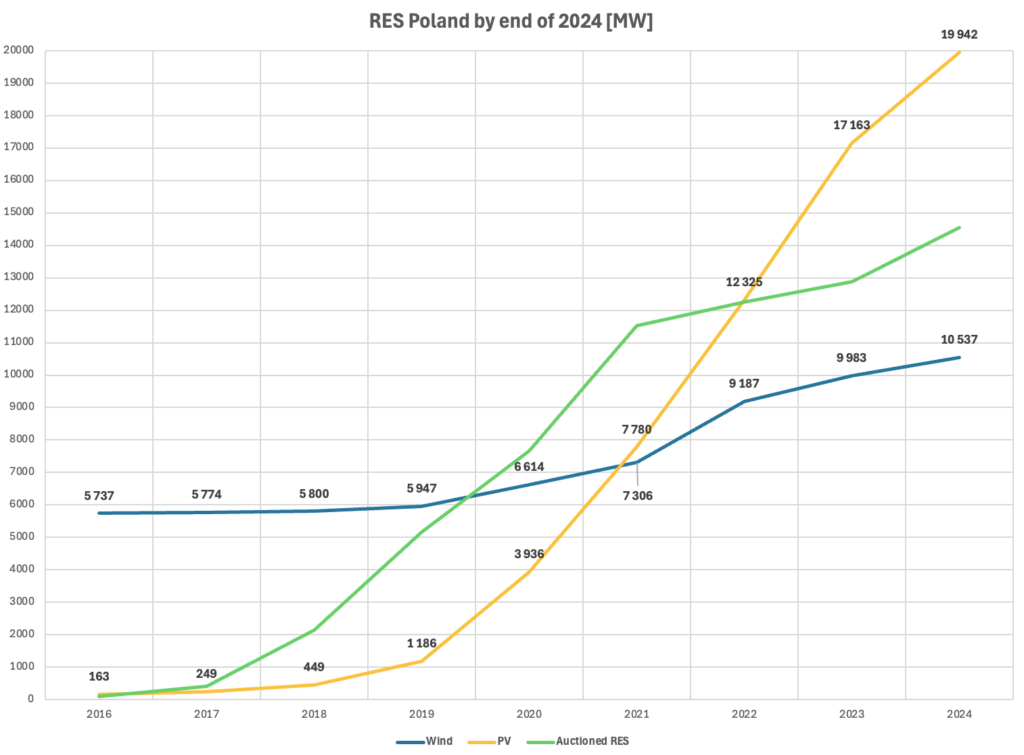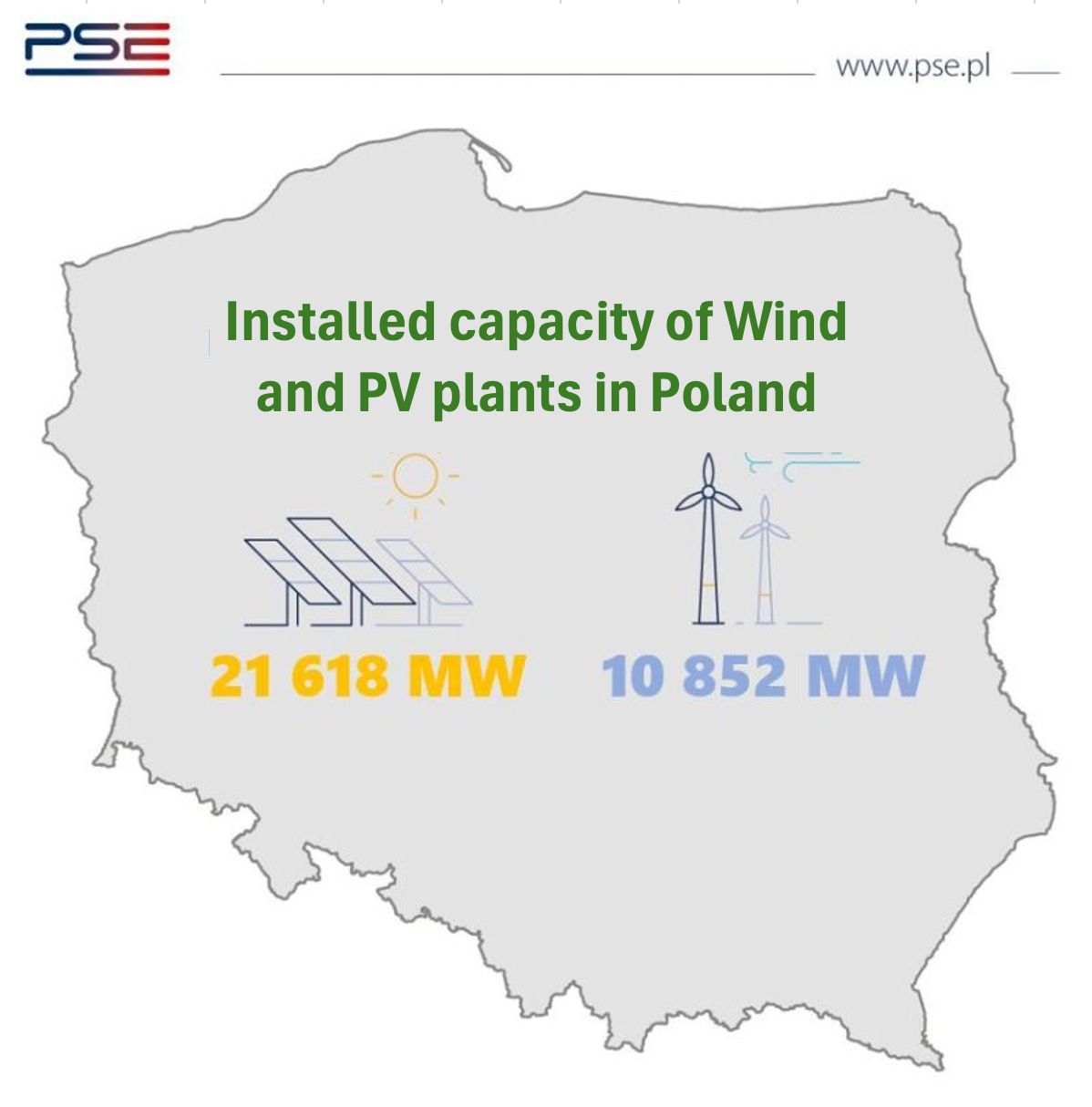Poland’s renewable energy market has experienced significant growth since 2016, with solar photovoltaics (PV) and wind power leading the way. The country has made substantial progress in diversifying its energy mix and reducing reliance on coal, although challenges remain in meeting ambitious renewable energy targets.
In 2016, Poland introduced a new auction system for renewable energy sources (RES), replacing the previous green certificate scheme. This change aimed to stimulate the development of renewable energy projects and increase their share in the country’s energy mix. The auctions have been successful in driving growth, particularly in the wind and solar sectors.
The solar PV market in Poland has seen remarkable expansion since 2016. At the end of 2016, the total installed PV capacity was just 160+ MW. However, by the march of 2025, this figure had skyrocketed to 21,600+ MW, representing an extraordinary growth rate. In fact, Poland became the fastest-growing market for photovoltaic power in the European Union. This rapid expansion was partly driven by government support schemes, including the “Mój Prąd” program launched in 2019, which provided financial incentives for residential PV installations (over 10 GW installed).
Wind power has also played a significant role in Poland’s renewable energy growth. Despite some regulatory challenges, including restrictions on onshore wind farm development introduced in 2016, the sector has continued to expand. In 2019, a major auction resulted in 2+ GW of new onshore wind capacity being awarded. Additionally, Poland has set ambitious targets for offshore wind development, aiming to install 5.9 GW by 2030 and 10+ GW by 2040.
The overall share of renewables in Poland’s energy mix has steadily increased since 2016.

Looking ahead, Poland has set more ambitious targets for renewable energy development. The Energy Policy of Poland 2040 (EPP2040) outlines plans to expand renewables capacity, including the development of offshore wind farms and the introduction of nuclear power. The country aims to achieve a 21% share of renewables in final energy consumption by 2030. BESS investments are developing fast to support grid and further RES development.
In conclusion, Poland’s renewable energy market has shown remarkable growth since 2016, particularly in the solar PV sector. While challenges remain, the country continues to make progress towards a more diversified and sustainable energy mix.


